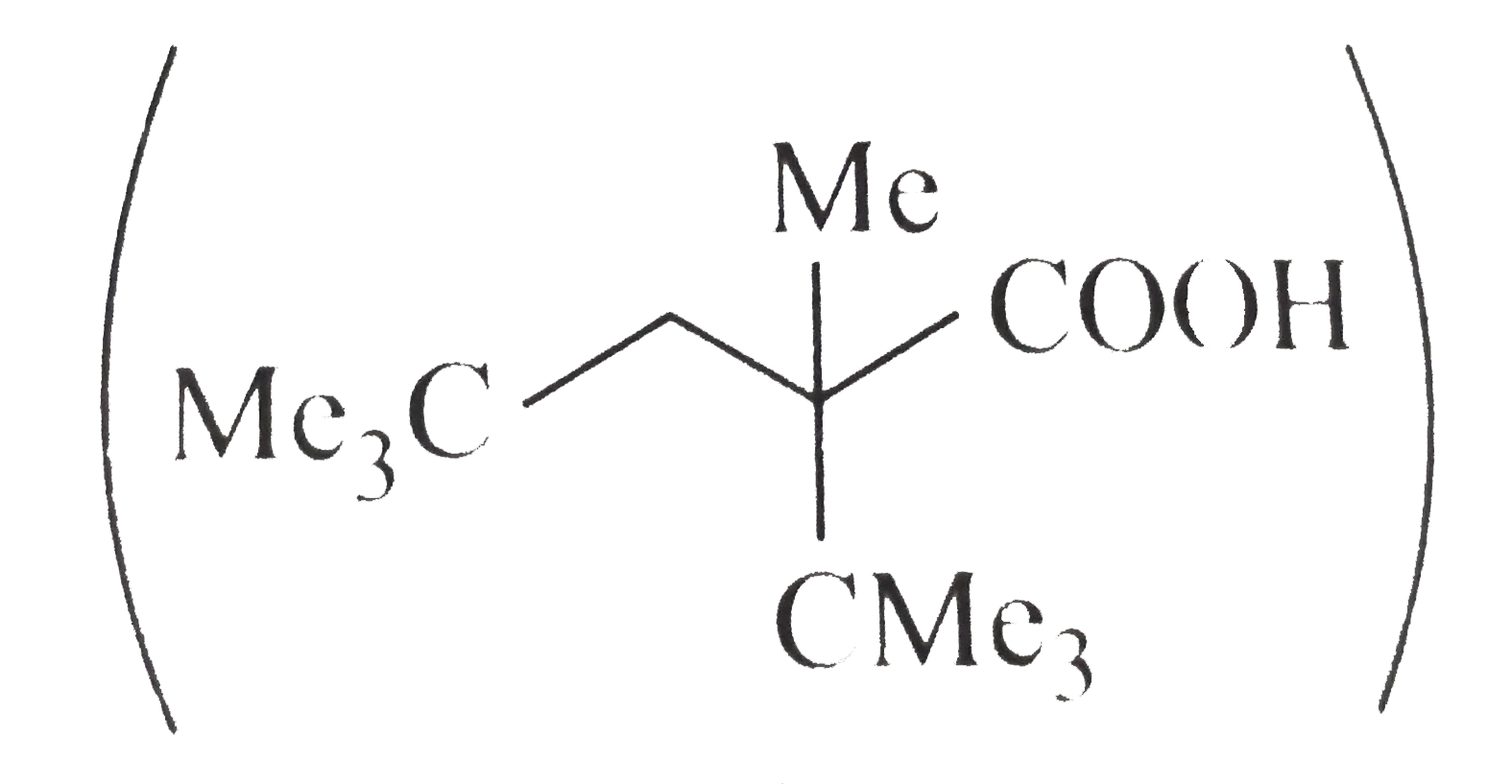Between maleic acid fumaric acids, Ka1 is more for
maleic acid
fumaric acid
both equal
cannot be predicted
The correct Answer is:A
To determine which acid, maleic acid or fumaric acid, has a higher dissociation constant Ka1, we need to analyze the structures and the stability of the conjugate bases formed after the acids lose a proton (H⁺).
1. Identify the Structures:
- Maleic acid (cis-isomer) has two carboxylic acid groups (–COOH) on adjacent carbon atoms, and they are positioned on the same side of the double bond.
- Fumaric acid (trans-isomer) also has two carboxylic acid groups, but they are on opposite sides of the double bond.
2. Dissociation of Acids:
- When maleic acid dissociates, it loses a proton from one of its carboxylic acid groups, forming a conjugate base.
- The same occurs for fumaric acid.
3. Stability of Conjugate Bases:
- The stability of the conjugate base is crucial in determining the acidity of the acid. The more stable the conjugate base, the stronger the acid (higher Ka).
- In maleic acid, after losing a proton, the resulting anion can participate in intramolecular hydrogen bonding. This stabilizes the negative charge on the conjugate base.
- In fumaric acid, after losing a proton, the resulting anion experiences intermolecular hydrogen bonding. While this also stabilizes the negative charge, it is generally less effective than intramolecular hydrogen bonding.
4. Comparison of Hydrogen Bonding:
- Intramolecular hydrogen bonding (as seen in maleic acid) is typically stronger and more stabilizing than intermolecular hydrogen bonding (as seen in fumaric acid). This is because the intramolecular interactions are more favorable due to proximity.
- Therefore, the conjugate base of maleic acid is more stabilized compared to that of fumaric acid.
5. Conclusion:
- Since the conjugate base of maleic acid is more stable due to intramolecular hydrogen bonding, maleic acid has a higher dissociation constant Ka1 compared to fumaric acid.
Final Answer:
Maleic acid has a higher Ka1 than fumaric acid.
- Maleic acid (cis-isomer) has two carboxylic acid groups (–COOH) on adjacent carbon atoms, and they are positioned on the same side of the double bond.
- Fumaric acid (trans-isomer) also has two carboxylic acid groups, but they are on opposite sides of the double bond.
- When maleic acid dissociates, it loses a proton from one of its carboxylic acid groups, forming a conjugate base.
- The same occurs for fumaric acid.
- The stability of the conjugate base is crucial in determining the acidity of the acid. The more stable the conjugate base, the stronger the acid (higher Ka).
- In maleic acid, after losing a proton, the resulting anion can participate in intramolecular hydrogen bonding. This stabilizes the negative charge on the conjugate base.
- In fumaric acid, after losing a proton, the resulting anion experiences intermolecular hydrogen bonding. While this also stabilizes the negative charge, it is generally less effective than intramolecular hydrogen bonding.
- Intramolecular hydrogen bonding (as seen in maleic acid) is typically stronger and more stabilizing than intermolecular hydrogen bonding (as seen in fumaric acid). This is because the intramolecular interactions are more favorable due to proximity.
- Therefore, the conjugate base of maleic acid is more stabilized compared to that of fumaric acid.
- Since the conjugate base of maleic acid is more stable due to intramolecular hydrogen bonding, maleic acid has a higher dissociation constant Ka1 compared to fumaric acid.
Maleic acid has a higher Ka1 than fumaric acid.
Topper's Solved these Questions
- BOOK - FIITJEECHAPTER - GENERAL ORGANIC CHEMISTRYEXERCISE - Section (II) [Jee mains]: With Single Correct Choice78videos
GENERAL ORGANIC CHEMISTRY
- BOOK - FIITJEECHAPTER - GENERAL ORGANIC CHEMISTRYEXERCISE - MORE THAN ONE CORRECT CHOICES24videos
GENERAL ORGANIC CHEMISTRY
- BOOK - FIITJEECHAPTER - GENERAL ORGANIC CHEMISTRYEXERCISE - SINGLE INTEGER ANSWER TYPE QUESTIONS14videos
GENERAL ORGANIC CHEMISTRY
- BOOK - FIITJEECHAPTER - GASEOUS STATEEXERCISE - MATCHING LIST TYPE QUESTION1videos
GASEOUS STATE
- BOOK - FIITJEECHAPTER - HYDROCARBONSEXERCISE - SINGLE INTEGER ANSWER TYPE QUESTION9videos
HYDROCARBONS
Similar Questions
How would you distinguish between:
(a) solutions of acetic acid, fornmic acid and ethanol
(b) calcium formate and calcium acetate?
(c) maleic acid and fumaric acid?
(d) acetic acid and acetone?
(e) acetic acid and acrylic acid?
(f) tartaric acid and citric acid?
(g) Benzoic acid and cinnamic acid?View SolutionExplain the following :
(a) Highly branched acids such as are less acidic than unbranched acids.
are less acidic than unbranched acids.
(b) Ka1 for maleic acid is greater than that for fumaric acid or pKa1 for maleic acid is less than that for fumaric acid.
( c) Ka2 for fumaric acid is greater than that for maleic acid or pKa2 for fumaric acid is less than that for maleic acid.
(d) Phthalic acid is a stronger acid than either isophthalic or terephthalic acids but phthalate monoanion is weaker than isophthalate and terephthalate monoanions.
( e) o−Nitro benzoic acid (pKa=2.21) is stronger acid than 3,5−dinitrobenzoic acid (pKa=2.80) but weaker than 2,4−dinitro benzene acid in water.View Solution
Knowledge Check
- Question 1 - Select One
Maleic and fumaric acids are
AGeometrical isomersBTautomersCoptical isomersDMetamers - Question 2 - Select One
Maleic acid and fumaric acid are :
Achain isomersBfunctional isomersCtautomersDgeometrical isomers - Question 3 - Select One
Maleic acid and fumaric acid:
Ahave identical melting pointBform the same ester with methanolChave identical solubility in waterDform the same anhydride on heating
Between
 acids Ka is more for View Solution
acids Ka is more for View SolutionMaleic acid and fumaric acid are -
View SolutionMaleic acid and fumaric acid are :
View SolutionSTATEMENT -1 : The solubility of maleic acid in water is higher than that of fumaric acid .
and
STATEMENT - 2 : Maleic acid and fumaric acid are cis- trans isomers .View SolutionKa and Ka are the "Ind and ind ionization constants of maleic acid whereas Ka1 and Ka1 are those of fumaric acid, then choose the correct options among the following:
View Solution

